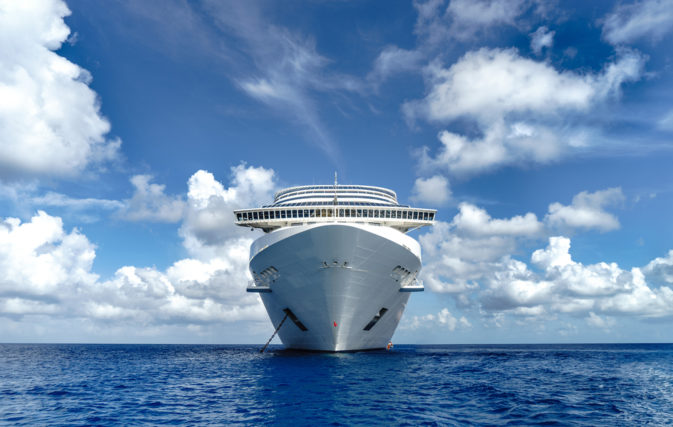TORONTO — The cruise industry is widely regarded as one of the most resilient in travel, accustomed to navigating through challenges like hurricanes, tropical storms and viral outbreaks such as H1N1. But in 2020, cruising finally met its match in COVID-19, the global health crisis that forced a complete and utterly devastating shutdown of the entire industry.
First came outbreaks on two Princess Cruises ships in February and March, followed by the CDC’s No Sail Order on March 14, a blanket-wide measure that effectively suspended all cruise ship operations of 250 or more passengers in the United States. Two days later, CLIA, which represents over 50 cruise lines and more than 95% of global cruise capacity, made the extraordinary move to voluntarily and temporarily suspend all ocean-going cruise ship operations from and to U.S. ports of call. A few days after that, on March 19, the Government of Canada followed suit with a cruise ban of its own that applied to ships carrying more than 100 people in Canadian waters.
In one fell swoop ships became dead in the water, an unprecedented scenario for the once formidable cruise industry.
For the better part of the year cruising remained largely inactive, with both bans seeing repeated extensions. Canada’s ban will carry over into next year, to Feb. 28, while the CDC’s No Sail Order, which expired on Oct. 29, has been replaced with a new Framework for Conditional Sailing Order that provides cruise lines with rigid guidelines for their eventual resumption. But this, say industry experts, won’t take place until at least spring 2021. And while several ocean-going and river cruise companies like MSC and AmaWaterways were able to resume limited summer operations in Europe for select European markets, the cruise industry still lost billions without any large-scale cruises operating in U.S., Canadian and Caribbean waters.
Just how much did it lose? CLIA puts the number at more than US$77 billion in global economic losses from mid-March through today. Plus, a total of 518,000 jobs were lost this year, resulting in $23 billion in wages.
Speaking exclusively with Travelweek, Laziza Lambert, Strategic Communications Manager at CLIA, emphasized the importance of cruising not just to the travel and tourism industries, but to the global economy at large.
“Cruise activity supports multiple sectors of the global economy, from transportation and aviation, to food and beverage, lodging, manufacturing, agriculture, travel agencies and a robust supply chain that stretches across the globe, the vast majority of which are small- and medium-sized businesses,” she said.
In Canada alone, the cruise industry generates Can$4.1 billion in economic activity and supports more than 29,000 Canadian jobs. CLIA estimates that every 1% drop in cruising in Canada results in up to 300 jobs lost, and that each day of the suspension results in the loss of up to 100 Canadian jobs. The pandemic’s economic impact is felt over 10 times as much in the United States, where the cruise industry generates over US$53 billion in economic activity and supports 421,000 American jobs.
With so much riding on their shoulders, cruise lines, to their credit, have not sat idle in waters these past nine months, waiting for the pandemic to pass. All major lines, both ocean-going and river, have spent this down time implementing stringent safety protocols to complement their already existing health measures onboard. Most notably, and in the spirit of collaboration, Royal Caribbean Group and Norwegian Cruise Line Holdings Ltd (NCLH) teamed up over the summer to launch a group of experts called the ‘Healthy Sail Panel’, tasked with developing safety recommendations in response to COVID-19. In September, the Panel submitted its first phase of protocols to the CDC, which totalled 74 best practices aimed at protecting the health and safety of guests, crew and local communities.
“As with the rest of the world, our plans for 2020 were turned upside down at the emergence of the COVID-19 pandemic, culminating in the voluntary suspension of cruise operations worldwide in mid-March,” said Lambert. “In the months that followed, our industry wasted no time engaging leading experts and government authorities to strengthen already robust public health measures and to put people and communities first. With enhanced measures in place, an initial resumption of cruising began in Europe and some other parts of the world, building confidence in the industry’s new protocols and inspiring hope for the future.”
With the rollout of COVID-19 vaccines now taking place around the world, including in Canada, the United States and the United Kingdom, hope is at an all-time high. And coupled with 2021 Wave Season deals that are now pouring in, the cruise industry looks poised to come back stronger than ever next year.
“As we turn the page on 2020, the industry has a lot to look forward to,” said Lambert. “Cruising is the best way to experience the world and as we look ahead, CLIA and our cruise line members look forward to welcoming passengers back from around the world in a gradual and responsible manner so that they can once again create unforgettable memories.”

